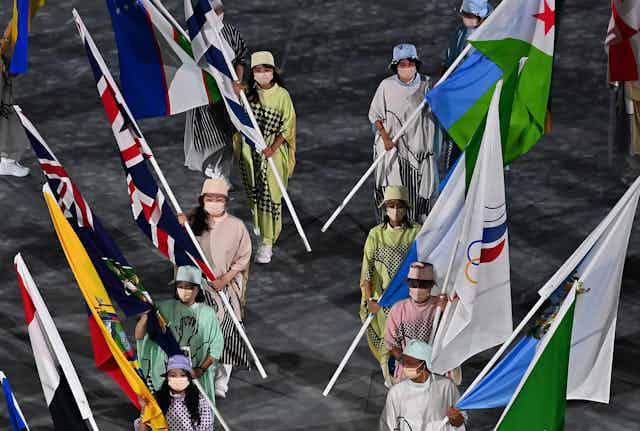The Tokyo 2020 Olympic Games brought the world together in the shadow of two planetary crises: the pandemic, which emptied stands and nearly caused the event to be cancelled, and climate change, which forced athletes and spectators to swelter in 40°C heat.
Clearly, the Olympics can no longer ignore the environmental challenges of the modern world. Sustainability formally became one of the three pillars of the Olympics in 2014 but the environment had already been on the agenda since 1994.
This is what first inspired me to research the potential for the Summer Olympics to turn their host nations into adopters of more ecological policies.
In my first study on the topic, published in 2013, I examined how four Olympic host cities and countries fared in their capacity to implement environmentally sustainable policies. I found that no causality was identified between Olympic Games hosting and improvements in the capacity for environmental sustainability of the host nation. Developments in this direction were tied to political changes.
More recently, research by Martin Müller at the University of Lausanne and five colleagues systematically evaluated how sustainable 16 Summer and Winter Olympic Games were between 1992 and 2020.
The team devised nine indicators to assess the sustainability of each Games. They suggested, perhaps provocatively, that “the overall sustainability of the Olympic Games is medium and … has declined over time”.
What makes a sustainable Olympics?
The nine indicators looked at a range of issues. They took in how much construction each Games needed, what the visitor footprint was and how large the event ended up being. Whether the local public approved of the Olympics coming to town was also factored in, as was “social safety” – or whether people were displaced to make the Games happen. The degree to which hosting the Games involved sidestepping local laws, such as planning rules, was also taken into account.
Budget balance was a factor, as was “financial exposure”. In the Tokyo Games, for example, the state footed more than half the sports-related costs against a backdrop of huge COVID-related uncertainty. “Long-term viability” was an important indicator in the study too. Games could score more if venues were reused after the event, for example.
Each indicator was assessed on a scale of zero to 100, from least to most sustainable and a mean value was calculated to determine the overall sustainability of the Olympics under examination.
The devised model corresponds to the 17 UN Sustainable Development Goals and the Paris climate change agreement, both of which envision just human development without increased environmental costs.
Across the indicators, the lowest value is reserved for budget balance, since overspending is generally expected from the Olympics. Games that required a lot of new construction score low since new venues cost money and habitually involve displacing people.
Best performers
According to the study, Vancouver was the first host to explicitly promise to be sustainable in its bid to host the 2010 Winter Olympics. But the sustainability of the Olympic Games has been on a downward trend ever since, with earlier Olympics generally performing better than those after Vancouver.
The Salt Lake City Summer Olympic Games of 2002, the Albertville Winter Games of 1992 in France and Barcelona 1992 are ranked as the most sustainable Olympics. Albertville is usually seen as environmentally damaging but in fact had only moderate numbers of visitors and personnel and few new venues were created, according to the study.
Worst offenders: Sochi 2014 and Rio 2016
For the Winter Olympics in Sochi, Russia in 2014 and the Summer Olympics in Rio de Janeiro in 2016, the picture is very different. These Games had the lowest sustainability scores. In the case of Rio, lots of people and communities were displaced to build venues and the law was circumnavigated to do it. After the event, few of the venues were regularly used, resulting in the highest cost overrun in the sample. Sochi also had extensive new construction with “no meaningful after-use for most venues”.

The study was completed before Tokyo 2020, and considering the uncertainty surrounding running the event due to COVID-19, the results produced in the study are provisional. The overall score given was 40 points, below the average of 48 points. The most sustainable Games, the Salt Lake City Winter Olympics in 2002, scored 71, Albertville, 69 and Barcelona 56. While around 500 people were displaced to build the venues, Tokyo made good use of existing buildings, with only 20% of venues built specifically for the Games.
With Tokyo 2020 now over, there’s a chance to reflect on how the Olympics may run in future editions. Knowing that a great part of CO₂ emissions in any Games is linked to the travel and habits of spectators, the decision to run the Olympics without them highlights the possibilities available in organising more sustainable Games. It is of course highly unlikely that these circumstances will be repeated but we might still consider greatly downsizing the Olympics in the interests of sustainability. We might also decide to rotate the Games among the same cities to avoid construction and displacement.

